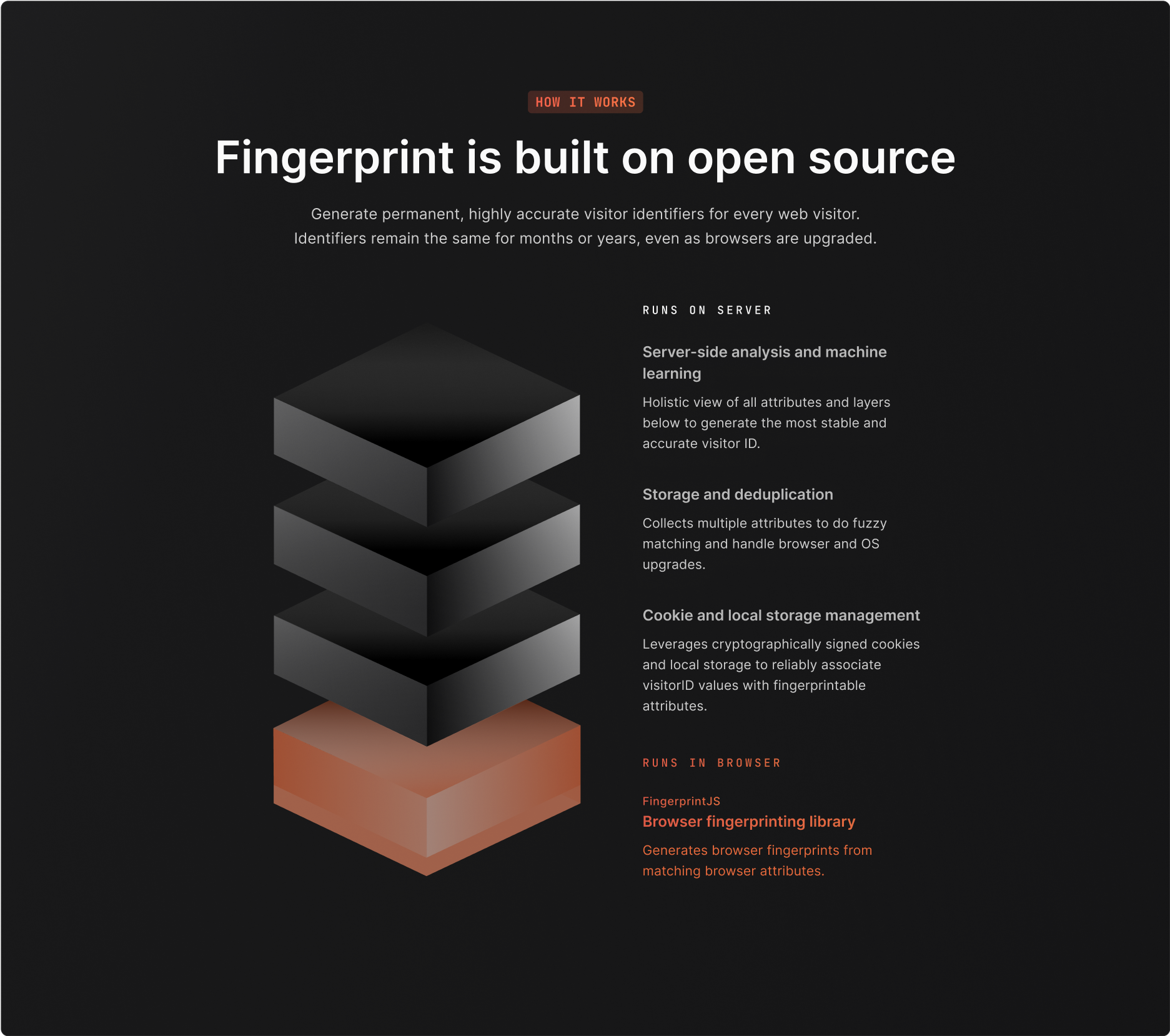Fingerprint Identification vs FingerprintJS
In early 2019, the creator of FingerprintJS listened to the users' feedback to develop a new and exciting product called Fingerprint Identification.

Fingerprint Identification vs. FingerprintJS
The primary difference between FingerprintJS and Fingerprint Identification lies in how the attributes collected from the browser are processed to create a unique device fingerprint.
FingerprintJS is a source-available, client-side browser fingerprinting library that combines browser attributes to generate a unique and stable hash. As the attributes from two browsers of the same version, from the same vendor, on the same platform, can be identical, FingerprintJS cannot tell these two browsers apart. Also, since the fingerprints are generated directly in the browser, they are easily vulnerable to spoofing and reverse engineering.
On the other hand, Fingerprint Identification is a commercial product that is designed and developed to accurately identify users and thus combat fraud. It processes the browser attributes on the server and also analyzes vast amounts of auxiliary data (e.g. IP addresses, time of visit patterns, URL changes, etc.). Because of these advanced matching techniques, Fingerprint Identification is able to reliably deduplicate different users that have identical devices.
From a security standpoint, Fingerprint Identification is more secure because:
- The information collected is never exposed in the browser making it harder to tamper with.
- The information collected is never shared with third party.
- The information is processed in our servers and transmitted securely using server-to-server APIs.
Compared to FingerprintJS, Fingerprint Identification has numerous other advantages. The table below compares and contrasts these two products:
FingerprintJS |
Fingerprint Identification |
|
|---|---|---|
Core Features |
||
|
Basic identification input signals
(screen, os, device name)
|
✓ | ✓ |
|
Advanced identification input signals
(canvas, audio, fonts)
|
✓ | ✓ |
|
Smart signals (output)
(Bot detection, device, network, and user behavior)
|
- | ✓ |
| ID Type | fingerprint | visitorID** |
| ID Lifetime | Only upto a few weeks | Will last several months and sometimes years |
| ID Origin | Client | Server |
| ID Collisions | Quite common | Very rare |
Support for native mobile platforms |
||
| Android SDK | ✓ | ✓ |
| iOS SDK | ✓ | ✓ |
Support for cross-platform frameworks |
||
| Flutter | - | ✓ |
| React Native | - | ✓ |
Advanced Features |
||
|
Incognito mode detection
(See our full
list of supported browsers)
|
- | ✓ |
|
Increased accuracy
(Gained from additional server-side signals (e.g.
TLS crypto support, ipv4/v6 data. etc)
|
- | ✓ |
|
Query API & realtime Webhooks
(Build flexible workflows)
|
- | ✓ |
|
Geolocation
(Based on IP address)
|
- | ✓ |
Operations |
||
| Data security | Depends on your infrastructure | Encrypted at rest |
| Storage | Depends on your infrastructure | Unlimited up to 1 year |
| Regions | Depends on your infrastructure | Global, EU and Asia data centers |
| Compliance | Depends on your infrastructure | Compliant*** with GDPR, CCPA, SOC 2 Type II, and ISO 27001 |
| SLA | SLA is not provided. | 99.8% Uptime |
| Support | GitHub Issues/Questions. Response times varies. | Dedicated support team that responds to chat, email, and calls within 1 business day |
How to get started? |
||
| Get it on GitHub | Sign up for a free 14-day trial | |
Updated 2 months ago
